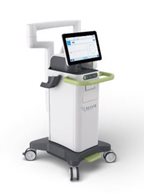People arriving at hospital emergency care departments complaining of chest pain have often had to undergo a lengthy series of tests to determine whether they have an acute coronary syndrome (ACS), and if so of what type. Faster diagnosis would allow clinicians to quickly ensure that patients are referred to surgery or to other types of therapeutics to ensure the best outcome and fastest recovery. Creavo is developing a point-of-care system, Corsens®, which uses a technique called magnetocardiography (MCG) to quickly study the heart and help rule out the presence of acute coronary syndrome (ACS).

MCG uses passive sensors to detect the magnetic fields generated by the contractions of the heart muscle. These fields are minute, but if interpreted correctly can distinguish between muscles that are being deprived of oxygen (ischaemia) – indicating a heart attack in progress – and those which are healthy (not ischaemic). Patients can then be triaged to the most appropriate care pathway quickly and safely. Such systems would be particularly valuable in situations where the emergency department is in danger of being overwhelmed, such as when a large incident is being handled or during a pandemic.
The sensors are a crucial part of the technology and consist of a coil wrapped around a conductive and electromagnetic metal alloy core material. This sensor must be fully and reliably calibrated to ensure that its results can be trusted and used for modelling of the patient’s condition. It is particularly important to understand the sensor’s sensitivity and signal-to-noise ratio. The coronavirus pandemic rendered it impossible for the company to conduct trials in a clinical environment to test and validate the product.
The M4R programme gave Creavo access to NPL’s highly-specialised magnetic measurements technologies, and in particular to a device known as a SQUID (superconducting quantum interference device magnetometer) which could be used to determine the magnetisation properties of the core material very accurately. If a material were considered to be a whole collection of very tiny magnets, the SQUID readings would indicate their strength, their concentration in the material and how many of them remain aligned with the magnetic field when it is removed.
As a result of the engagement, Creavo now has obtained an independently-verified confirmation of the magnetic properties of its sensor core. This allows them to reassure clinicians and other stakeholders that the equipment performs as stated. With continued modelling of the acquired data, the product can now be further refined to improve the diagnosis of cardiac conditions.
By reducing the time needed and the number of tests to diagnose conditions, this technology has the potential to improve utilisation of medical funding, reduce strain on emergency departments and improve health outcomes by directing patients quickly to the right intervention. If Corsens® was used across the NHS, Creavo estimate savings in the region of £200 Million per annum through quickly ruling out patients who do not need expensive diagnostic tests.
It’s about the quality and pedigree that NPL bring as a third party to verify the results we’ve obtained. If we claim a certain sensitivity, we can reference back to the NPL figures.
Dominic Lavin, Lead Research Physicist, - Creavo

Creavo was spun out from the University of Leeds in 2014. This technology is based around the properties of its amorphous thin-film metal alloy coil core material and the computer modelling systems it has developed to analyse the readings from its sensors.